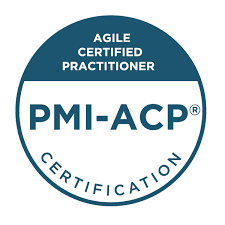Description
The PMI Agile certification demonstrates a project manager’s experience of the Agile processes and principles. Not only does it give you more credibility in your career, but as an Agile-certified practitioner, it shows you have the skills and knowledge of both Agile practices and Waterfall, and can guide teams on Agile projects.
BJSL’s Agile experts are committed to helping qualified project managers to become certified, so we have created an interactive course with the intention of preparing project managers for the ACP exam.
After completing this course, students will be able to demonstrate their high level of professionalism in Agile principles, tools and practices, while also enhancing their professional adaptability in project management techniques and tools.
Course Objectives
- Comprehend Agile
- Comprehend Scrum
- Comprehend domains of Agile practices
- Comprehend extreme programming
- Comprehend Lean Kanban
- Comprehend risk management
- Comprehend communication management
- Comprehend soft skills
COURSE CONTENT – DOMAINS OVERVIEW
- DOMAIN I. AGILE PRINCIPLES AND MINDSET (9 TASKS)
Explore, embrace, and apply Agile principles
and mindset within the context of the project team and organisation. - DOMAIN II. VALUE-DRIVEN DELIVERY (4 SUBDOMAINS, 14 TASKS)
Deliver valuable results by producing high-value increments for review, early and often, based on stakeholder priorities. Have the stakeholders provide feedback on these increments, and use this feedback to prioritise and improve future increments. - DOMAIN III. STAKEHOLDER ENGAGEMENT (3 SUBDOMAINS, 9 TASKS)
Engage current and future interested parties by building a trusting environment that aligns - DOMAIN IV. TEAM PERFORMANCE (3 SUB-DOMAINS, 9 TASKS)
Create an environment of trust, learning, collaboration, and conflict resolution that promotes team self-organisation, enhances relationships among team members, and cultivates a culture of high performance. - DOMAIN V. ADAPTIVE PLANNING (3 SUB-DOMAINS, 10 TASKS)
Produce and maintain an evolving plan, from initiation to closure, based on goals, values, risks, constraints, stakeholder feedback, and review findings - DOMAIN VI. PROBLEM DETECTION AND RESOLUTION (5 TASKS)
Continuously identify problems, impediments, and risks; prioritise and resolve in a timely. manner; monitor and communicate the problem resolution status; and implement process improvements to prevent them from occurring again. - DOMAIN VII. CONTINUOUS IMPROVEMENT (PRODUCT, PROCESS, PEOPLE) (6 TASKS)
Continuously improve the quality, effectiveness, and value of the product, the process, and the team.


 Mr. KULJIT SINGH SARNA
Mr. KULJIT SINGH SARNA Mr. RAMESH GUPTA
Mr. RAMESH GUPTA


